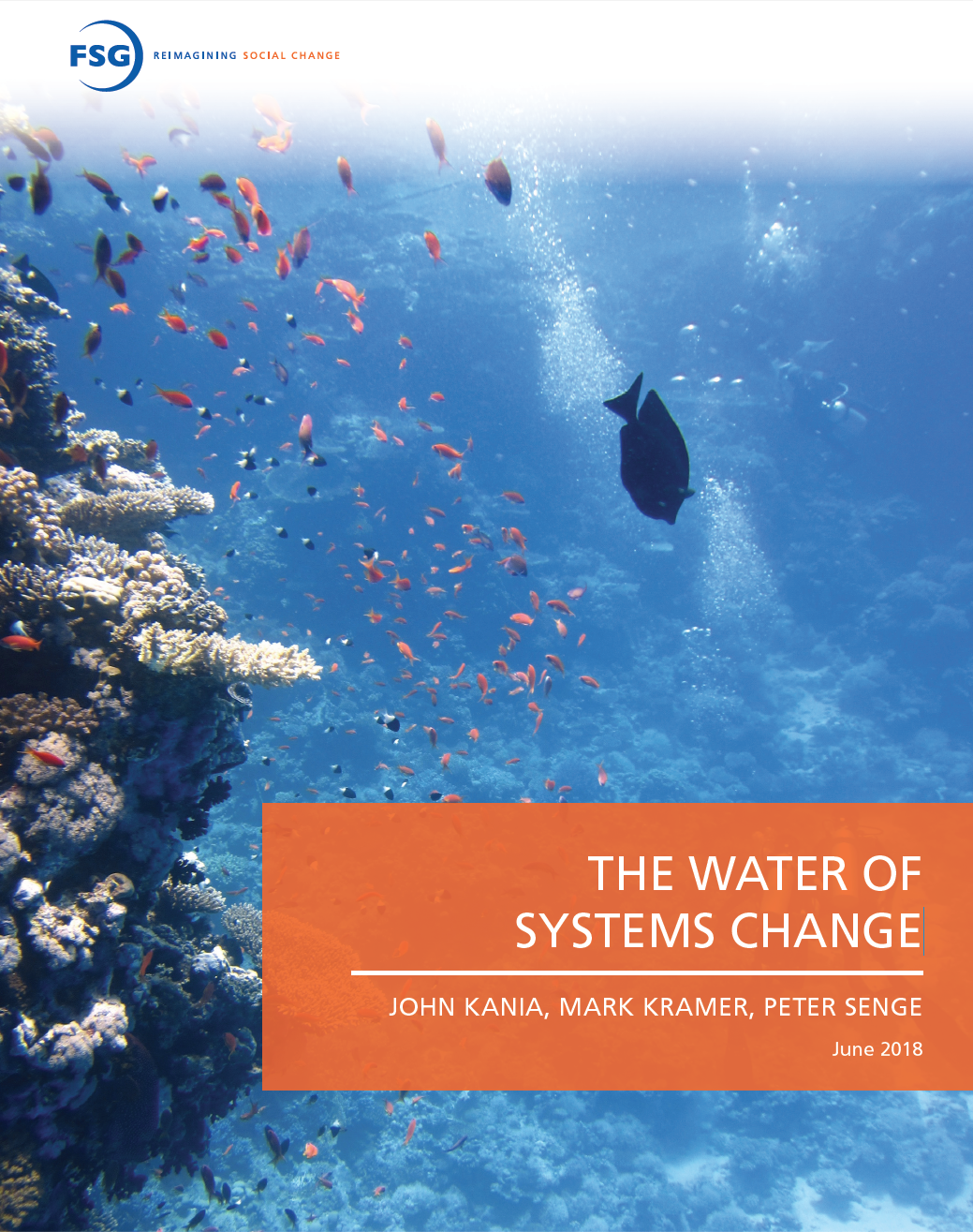“Systems change” is not a new concept, but increasingly leaders of foundations, nonprofits, and other influential social sector institutions are hailing it as a promising way to achieve greater impact. The idea has moved from activist and organizer circles to the forefront of discussions among foundation CEOs and is increasingly cited in philanthropy publications and conferences. Yet despite all the attention, and a long tradition of academic study, the concept and its implications for funders and grantees can still seem hard to grasp and apply. One reason the concept is so challenging may be captured by the following well-known story that goes something like this:
A fish is swimming along one day when another fish comes up and says “Hey, how’s the water?” The first fish stares back blankly at the second fish and then says “What’s water?”
As more and more foundations pursue systems change, foundation leaders are increasingly recognizing the water they have been swimming in all along. For all the excellent programs and nonprofit organizations foundations have seeded and scaled up, funders have rarely reached their ambitious goals for lasting change. Complex problems such as mass incarceration, educational disparities, and environmental degradation remain intractable due to myriad constraints that surround any specific program a foundation might fund. Constraints include government policies, societal norms and goals, market forces, incentives, power imbalances, knowledge gaps, embedded social narratives, and many more. These surrounding conditions are the “water” that many foundation leaders are exploring more deeply.
The-Water-of-System-Change.pdf (1702 downloads )Authors: John Kania, Mark Kramer, Peter Senge




